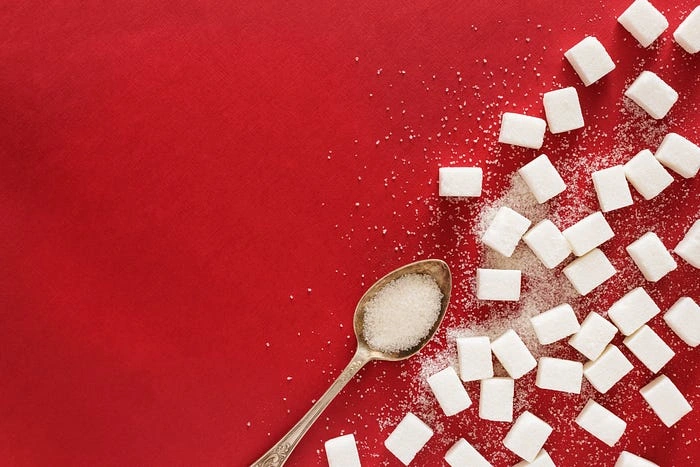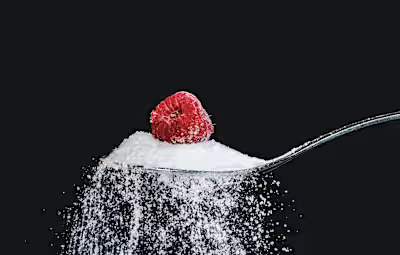How Obesity and Genetics Lead to Insulin Resistance and Type 2 …

How Obesity and Genetics Lead to Insulin Resistance and Type 2 Diabetes
·
4 min read
·
Aug 5, 2023

I described all kinds of diabetes and related information including statistics in my previous article. Here I will mainly explain type-2 Diabetes and its relation to Insulin Resistance and Obesity. How a vicious cycle of obesity and insulin resistance accelerates a susceptible individual towards type-2 diabetes.
Among all types, type 2 is the most common and seen maximum in number. 90% to 95% of all diagnosed diabetes are Type 2 DM. Insulin resistance indicates that insulin is less effective or doesn’t work as much in this condition. Therefore it is also called as Non-Insulin Dependent Diabetes Mellitus - NIDDM. It’s seen in adults and mostly in old people so also called Adult-onset diabetes.
What causes type 2 diabetes: -
Contrary to type 1 DM, type 2 does not occur due to auto-immune reaction (auto-immune reaction - the body's own protective cells cause damage to insulin-producing beta cells). There are two major causes of type 2 DM: -
- Genetic cause
- Environmental cause / Lifestyle (Obesity)
Polymorphism in a gene named TCF7L2 is the genetic cause of type 2DM. This is the reason why Diabetes travels down the line in the family.
The second and most important cause is the Environmental cause. Lifestyle and obesity come under it. It is important because it has a strong association with diabetes and it can be modified. A/c to WHO among all diabetics, 1 in 10 are obese and 1 in 3 are overweight. If you look into type 2 diabetes patients specifically then approximately 80% of them are obese.
How Obesity causes diabetes and Insulin Resistance: -
2 kinds of obesity are seen in people - Peripheral obesity and Central obesity / Abdominal obesity.
- Out of these two, central obesity is more responsible for type 2 diabetes because central fat tissues are more likely to convert into Free Fatty Acid (FFA). FFA later forms some toxic intermediates (Diacyl Glycerol) which suppress the effect of Insulin on Insulin receptors and cause Insulin Resistance.
- In an obese person, more production of pre-glycemic Adipokines occurs which promotes hyperglycemia in them and increases the workload on Insulin-producing Beta cells.
- Obese individuals are prone to Inflammation as well, causing the release of some Cytokines that act adversely on Insulin receptors and cause decreased Insulin sensitivity.
All 3 conditions mentioned above, force the Beta cells of the pancreas to produce more insulin. If a person does not modify his lifestyle at this point then beta cells get exhausted and burned out, causing Diabetes.
This was a brief explanation and the latest known pathway of how obesity causes diabetes.
Type 2 Diabetes Symptoms and why they occur:-
There is a popular triad seen in a person with diabetes (type 1 as well as type 2).
- Frequent urination (Polyuria)
- Increased thirst and fluid intake (Polydipsia)
-Increased hunger and food intake (Polyphagia)
A high amount of glucose in the bloodstream signals the kidney to increase filtration and remove excess glucose, causing frequent urination, which is called Polyuria.
Along with glucose, water also gets filtered. This leads to the removal of water from the body at a faster rate and the person feels thirsty all the time, therefore, he has to drink water frequently thus the Polydipsia.
Since glucose doesn’t get stored properly and filtered quickly, The person feels hungry and to get energy or glucose, he has to eat food frequently. This is called Polyphagia.
Other than these symptoms, patients can also feel tingling, numbness, and pain sensation in the hands or feet. His wounds or small cuts can take a very long time to heal. These problems occur due to a prolonged high level of sugar in the blood which leads to blood vessel damage and nerve damage.
Type 2 Diabetes Treatment Overview: -
The main goal of type 2 diabetes treatment is to control the blood sugar level and maintain it within a normal range. Along with this other medical conditions related to diabetes are also taken into consideration such as the eye, kidney, nervous system, heart, etc.
Diet and exercise is the most important part of type 2 diabetes management. People with newly diagnosed type 2 DM are usually treated with a combination of diet, exercise, and oral medication. Oral medication works by improving the body’s response to insulin or by promoting the body to produce more insulin. It is not uncommon to add more oral medications as time passes. Later in life, if oral medications are not able to control blood sugar level then Insulin or any other injectables has to be added.
Despite medications, healthy lifestyle choices and exercise remain essential for managing and preventing Type 2 DM.
Sources: -
https://www.ncbi.nlm.nih.gov/pmc/articles/PMC3154446/
https://www.niddk.nih.gov/
http://www.who.int/en/
http://www.diabetes.org/
Like this project
Posted Mar 25, 2025
I described all kinds of diabetes and related information including statistics in my previous article. Here I will explain type-2 Diabetes and its relat…





